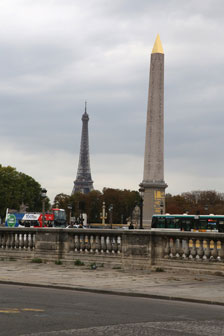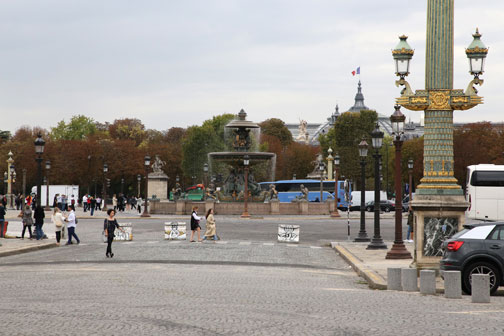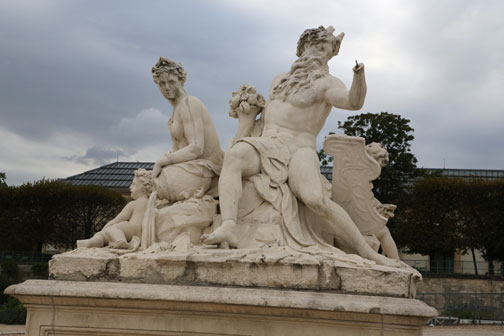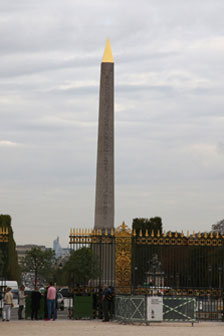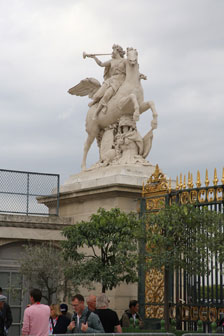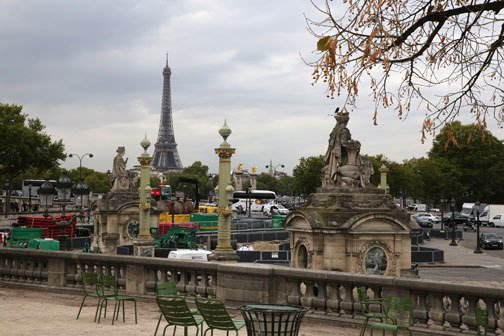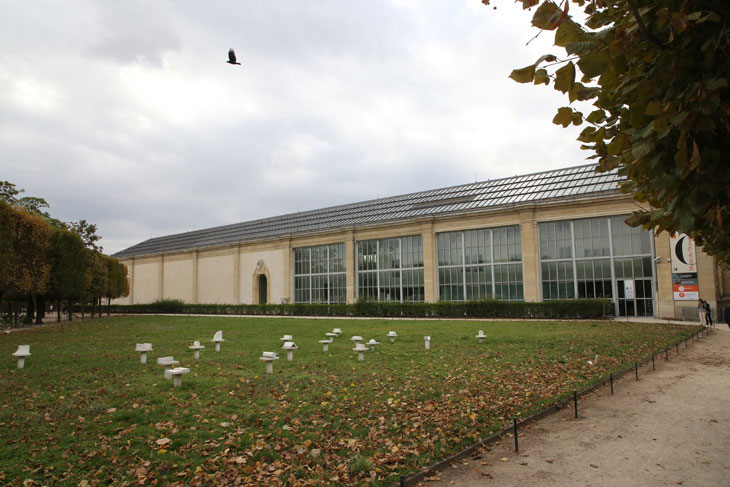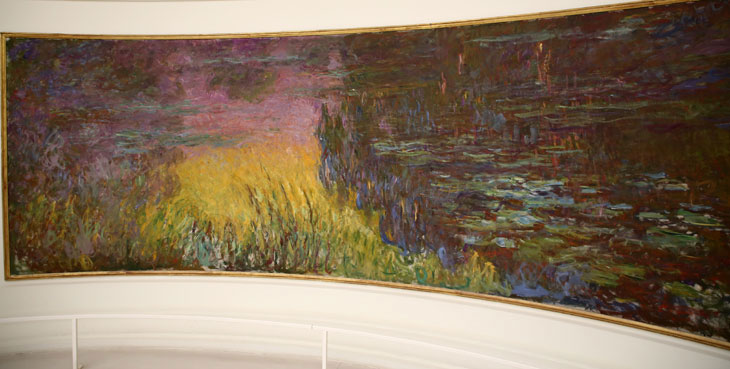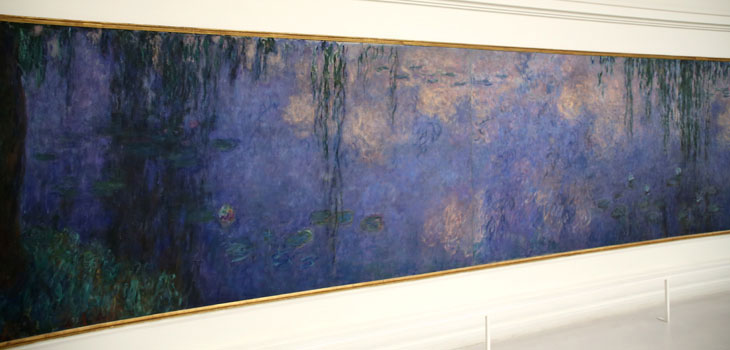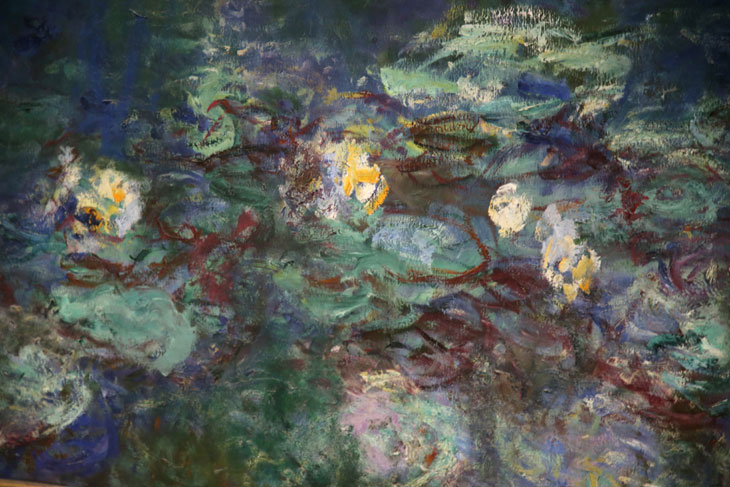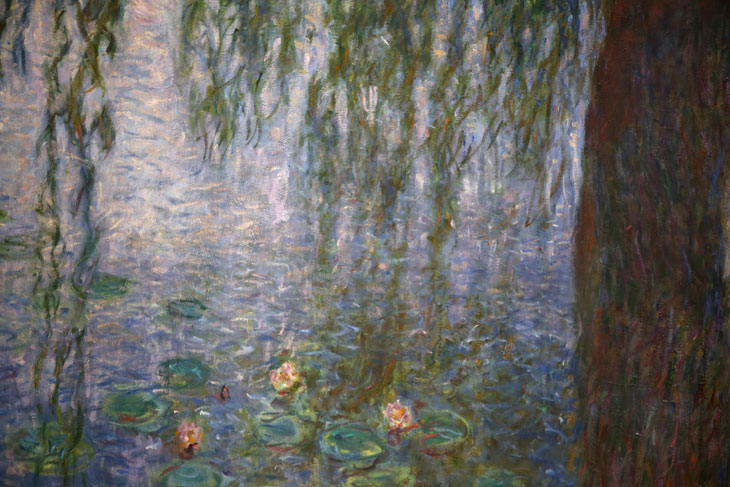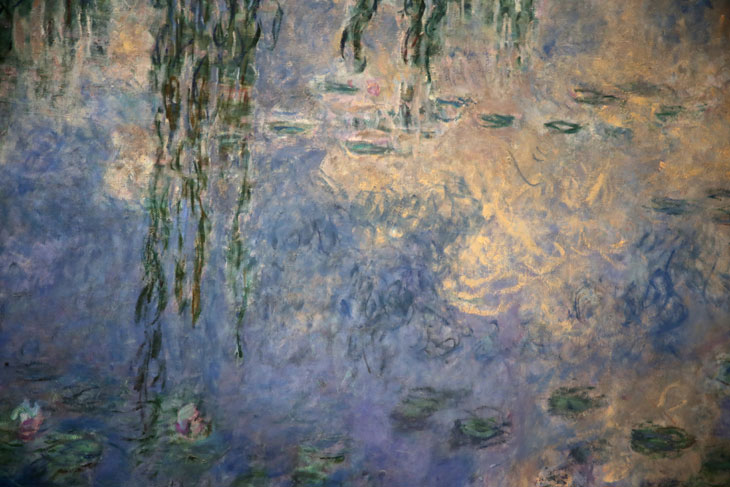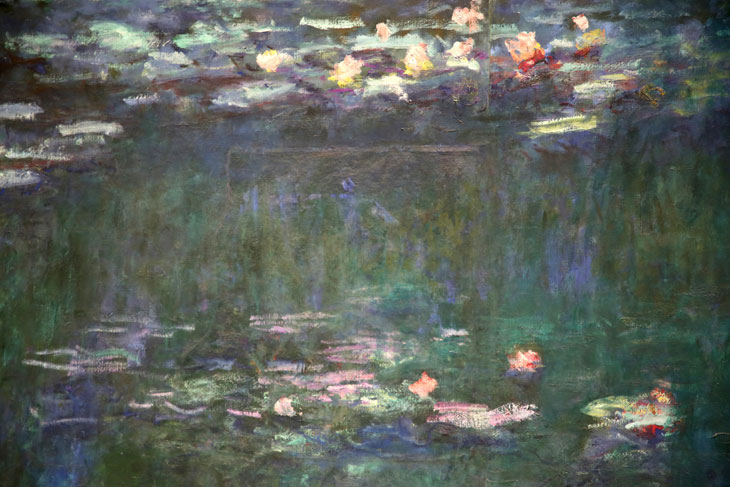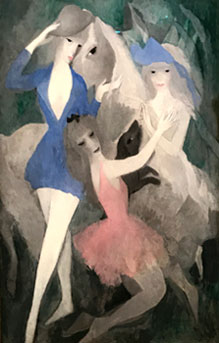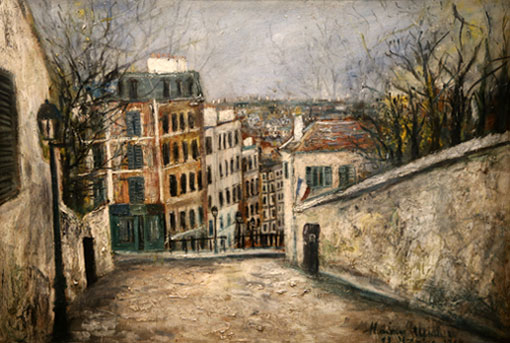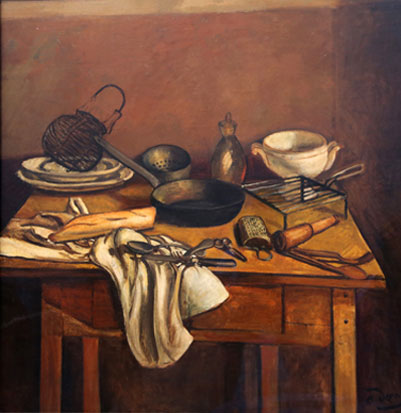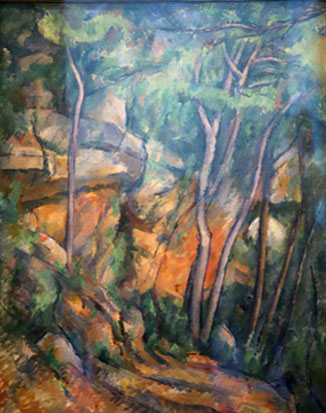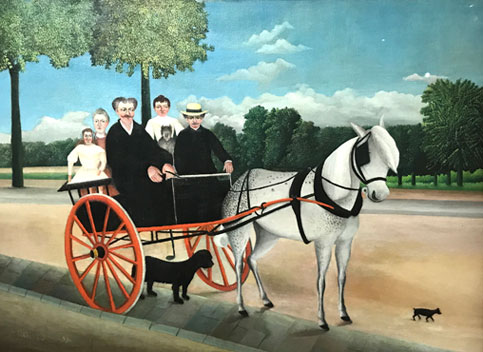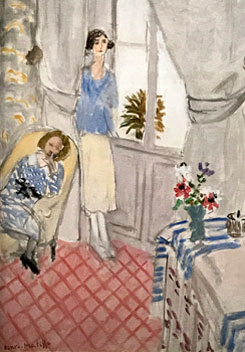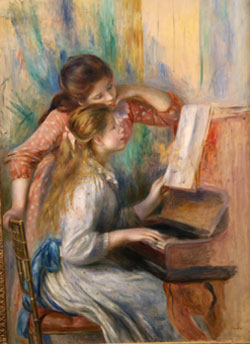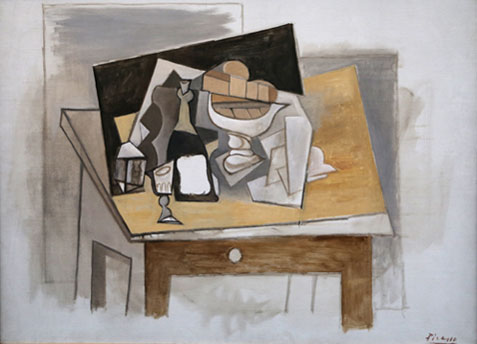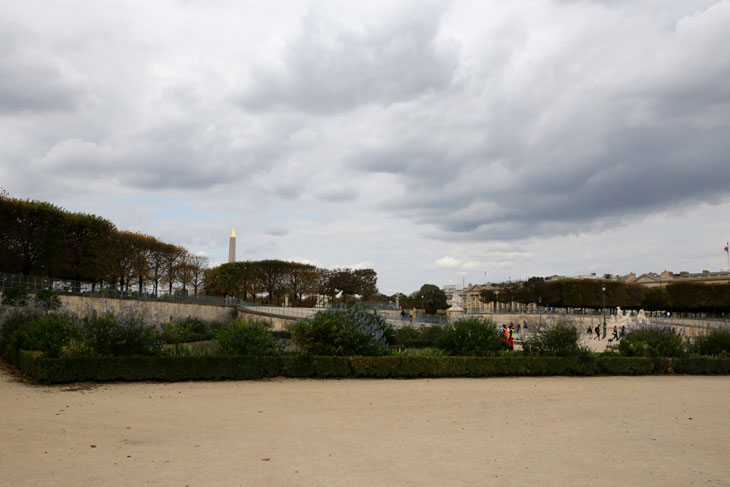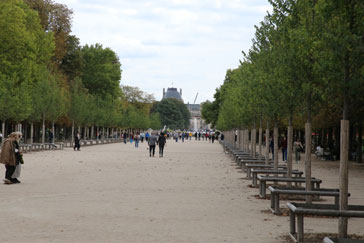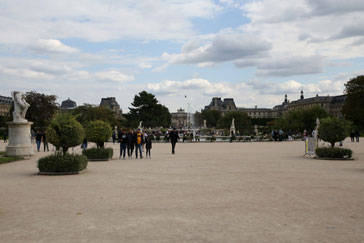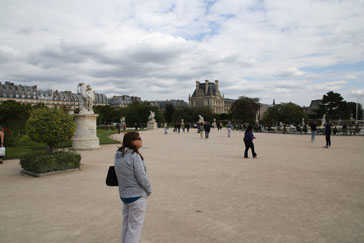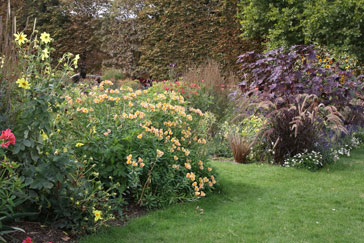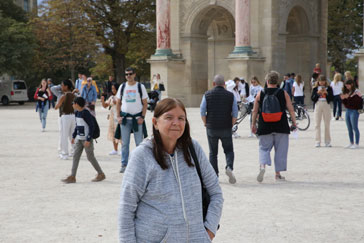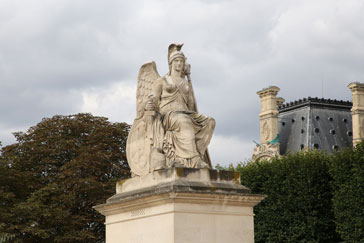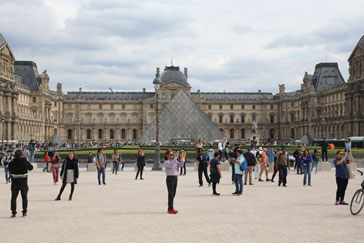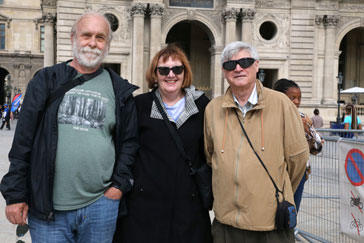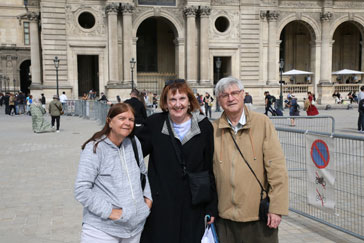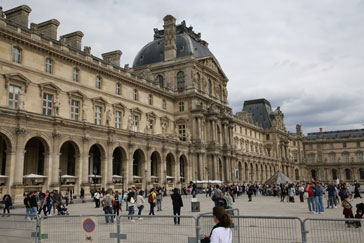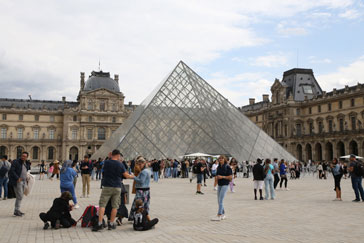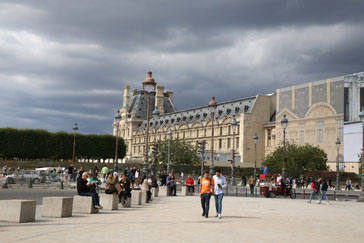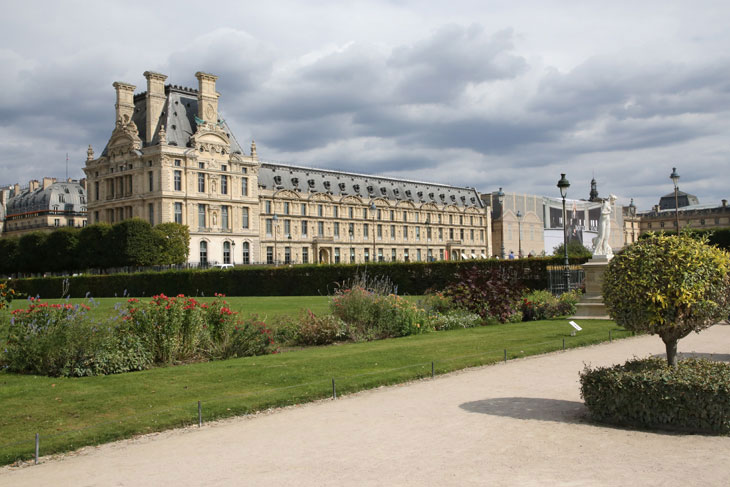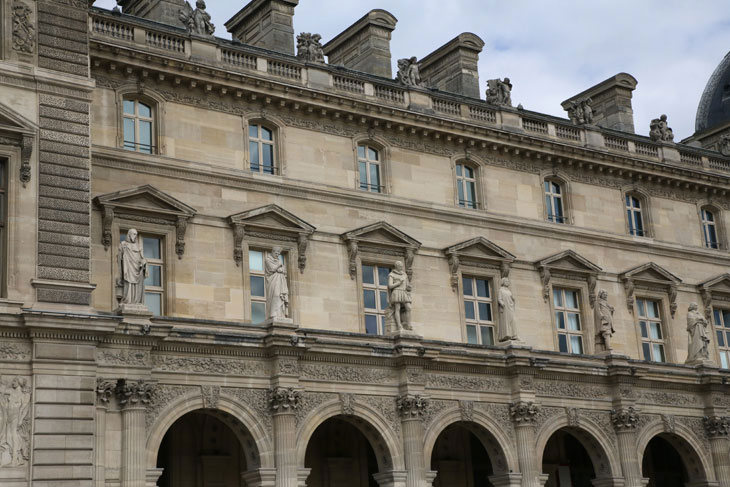Musée de l'Orangerie and Outside the Louvre
When we were planning the things we wanted to do in Paris, we realized that neither one of us particularly
wanted to visit the Louvre. I was completely turned off by the thought of battling my way through hordes of
people to view the Mona Lisa - people more intent on taking selfies than appreciating the masterpieces all
around them. Anyway, I had already seen the painting at the Worlds' Fair in New York when I was a teenager.
The works of art that we really wanted to see were at the Musée de l'Orangerie and the Musée d'Orsay.
We decided to visit the Musée de l'Orangerie first.
Our day began at the Place de la Concorde, the largest square in Paris, which sits at one end of the
Champs-Élysées. The square is perhaps most famous for being the place where Louis XVI and Marie-Antoinette
were executed.
Today, the square has two monumental fountains and several prestigious hotels, but the feature that caught
my attention is an ancient Egyption obelisk decorated with hieroglyphics which once marked the entrance to
the Luxor Temple. The Egyptian government gave it to France in the 19th century. The gold-leaf cap on the
top was added in 1998 to replace the original top which was stolen in the 6th century BC.
Fashionable homes in Northern Europe in the 17th, 18th, and 19th centuries often had a separate building on the
grounds where oranges and other fruit trees were grown. The building now known as the Musée de l'Orangerie was once
the orangerie for the Palace of the Louvre. This is a picture of the building.
Eight large panels of Claude Monet's Water Lillies paintings are housed in two rooms of the museum. The rooms are
oval shaped and form an infinity symbol.
The rooms were a bit crowded, but it was possible to sit on the benches and enjoy these beautiful masterpieces.
Here are pictures of two of the panels.
I took some pictures of small sections of the panels.
These are some of the other works of art we saw in the museum. The paintings below were done by Laurencin,
Utrillo, Derain, Cézanne, Rousseau, Matisse, Renoir, and Picasso.
We spent about an hour and a half in the museum. Then we wandered through the Tuileries Gardens down to
The Louvre. The gardens have wide walkways and several fountains.
One thing I really like about Paris is that there are a lot of benches where you can sit and enjoy the
atmosphere.
The Arc de Triomphe du Carrousel, a triumphal arch built by Napoleon to celebrate his military victories,
stands near the Louvre. It is about half the size of the better-known Arc de Triomphe de l'Etoile at the
other end of the Champs Élysées.
We stood for awhile outside the Louvre admiring the amazing buildings and watching people take endless selfies
of themselves. We took some pictures of ourselves too, along with two of our traveling companions. Then we headed
back to our hotel for the last night of our first pass through Paris.
